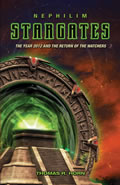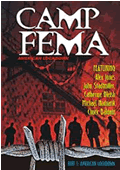PART 2
By Thomas R. Horn
February 5, 2012
NewsWithViews.com
The Good News and the Bad News
After studying the history of the prophecy of the popes and the surrounding scholarly literature, we have some good news and some bad news. What’s that? You want the bad news first? Sure, no problem, let’s get this unpleasantness out of the way.
The
bad news is that part of the prophecy may be a forgery which was fabricated
around 1590. We say forgery meaning that over half of the prophecies,
the first seventy or so predictions, are vaticinia ex eventu (prophecy
from the event). It seems someone irrevocably altered the original medieval
document and the original is either hidden away or lost to history. The
first known publication of the  “Malachy
Prophecy of the Popes” was in Arnold de Wion’s massive eighteen-hundred-page
volume entitled Lignum Vitae (Tree of Life), which was published in 1595.
That text will be presented and examined below. Even though we have good
reason to believe a much older document is still visible, we must accept
that the earliest instance of the prophecy surfaced nearly four hundred
years after its alleged origin in 1139. Despite the legend which pleads
it was locked away in a musty Vatican vault those four hundred years,
the skeptics still have valid points. Even so, it very well could be the
work of Saint Malachy coarsely corrupted by a forger. Of course, this
would fall neatly in line with the Roman Catholic practice demonstrated
by the Donation of Constantine and Pseudo–Isidorian Decretals. Alternatively,
some have suggested it was partially the work of Nostradamus cleverly
disguised to protect his identity. While the identity of the actual prophet
remains unclear, the author was a prophet whether he knew or not.
“Malachy
Prophecy of the Popes” was in Arnold de Wion’s massive eighteen-hundred-page
volume entitled Lignum Vitae (Tree of Life), which was published in 1595.
That text will be presented and examined below. Even though we have good
reason to believe a much older document is still visible, we must accept
that the earliest instance of the prophecy surfaced nearly four hundred
years after its alleged origin in 1139. Despite the legend which pleads
it was locked away in a musty Vatican vault those four hundred years,
the skeptics still have valid points. Even so, it very well could be the
work of Saint Malachy coarsely corrupted by a forger. Of course, this
would fall neatly in line with the Roman Catholic practice demonstrated
by the Donation of Constantine and Pseudo–Isidorian Decretals. Alternatively,
some have suggested it was partially the work of Nostradamus cleverly
disguised to protect his identity. While the identity of the actual prophet
remains unclear, the author was a prophet whether he knew or not.
The exciting news is that the prophecy of the popes, although tainted, is still a genuine prophecy. Despite the superficial insincerity detectable in the first section of “prophecies,” the post publication predictions show astonishing fulfillments. We have no critical analysis to explain away the sometimes jaw-dropping, post-1595 fulfillments. Indeed, we are currently at 111 out of 112 and believers argue they seem to have increased in precision over time. However, we shall deal with bad news first. As we shall demonstrate, the Vatican’s penchant for propaganda is undisputed in the record of history. In Rome’s tradition of the altering ancient documents for political expediency, the prophecy of the popes was probably used as propaganda for Cardinal Girolamo Simoncelli papal ambitions. Nevertheless, it was a ploy which did not work as Simoncelli lost to Gregory XIV, Innocent IX, and Clement VIII. While textual evidence for this conspiracy is provided, we suggest the reader remain objective and patient in lieu of the more astounding findings.
Historically, the prophecy has enjoyed mixed acceptance. Four hundred years ago, with so many more popes to go, it was a mere novelty. However, as time runs short, the forecast understandably becomes more urgent and the criticism more caustic. Accordingly, beginning in the nineteenth century, the Jesuits, save one, have been outspokenly critical. As a result, the most recent edition of the Catholic Encyclopedia suggests that the prophecy is a late sixteenth century forgery, while the older 1911 edition allows, “it is not conclusive if we adopt Cucherat’s theory that they were hidden in the Archives during those four hundred years.”[1] He refers to the nineteenth-century author, Abbé Cucherat, who is one of the few who argued for the authenticity of the prophecy in his book, Revue du monde catholique, published in 1871. We will examine it and other positive assessments in the next chapter. Even so, most scholars point out that Malachy’s biographer and dear friend, St. Bernard, makes no mention of the papal prophecy in Life of St. Malachy of Armagh.[2] This argument from silence is ubiquitous in the literature.
Modern academic sources are also not very charitable. The Oxford Dictionary of the Christian Church bluntly states, “The so-called Prophecies of Malachy, which are contained in a document apparently composed in 1590, have no connection with St. Malachy except their erroneous attribution to him.”[3] Jesuit scholarship presents a united front. M.J. O’Brien’s An Historical and Critical Account of the So-Called Prophecy of St. Malachy Regarding the Succession of Popes is a thorough attempt at debunking. Herbert Thurston, another Jesuit, was a prolific late nineteenth-century critic. He argues that “not one scrap of evidence has ever been adduced to show that St. Malachy’s prophecy about the Popes had been quoted, or even heard of, before it was published by Wion in 1595.”[4] This is not necessarily the case as we will discuss a possible reference to the prophecy published by Nicholas Sanders in 1571. Even so, most scholars bifurcate the list of 112 Latin phrases at number 76, due to the circumstances surrounding its publication. In so doing, two layers of context are established in the prophecy. This approach is adapted from biblical scholarship.
Exegesis in biblical studies is always an attempt to derive the original author’s intention for his original reader and that is the methodology undertaken here. For instance, when scholars study the New Testament Gospels, they take into account layers of context. There is the context in which Jesus is interacting in the original historical setting and then there is a layer of context in which the author of the gospel is presenting his account to a later audience. Careful study reveals that each evangelist author, Matthew, Mark, Luke, and John, frames the events of Jesus’ life in unique ways for their own theological and evangelistic purposes. The underlying context of Jesus can be assimilated by studying first-century Judaism in Israel. We study the Pharisees to understand Jesus’ criticism of their traditions. In the same way, the upper level, the author’s context, can be discerned by how he presents Jesus. Still, the order in which a certain account is presented in a Gospel is often unique. This requires the careful student to “think vertically” for potential significance.
You might ask, “Is the author making a statement by where he places this parable?” The context of the evangelist author speaks to why and how he selected, arranged, and adapted the historical material about Jesus. Additionally, the scholar must “think horizontally” meaning to read each pericope with awareness of the parallels in other Gospels.[5] While each of the four accounts preserves actual historical data, they are not always chronologically identical because of the secondary layer of context pertaining to the unique purpose of Mark, Matthew, Luke, and John. This methodology unveils new insights into the prophecy of the popes as well.
At first glance, there appear to be at least two levels of historical context, that of the original author and then that of the publisher. We will examine the possibility of even deeper contextual layers in the next chapter but for now we might accept the Malachy legend or perhaps a pseudepigrapher as the lower contextual level. To determine the upper level, the context of the publisher/commentator, we discover that is has been suggested that a papal emissary, Nicholas Sanders (1530–1581), may have brought an original Celtic version of the prophecy to Rome during the reign of Pope Pius V (1566–72).[6] While he may have obliquely referred to the prophecy in a book published in 1571, it has also been suggested that the first specific mention of the prophecy was in a handwritten account by Don Alphonsus Ciacconus, a Spanish Dominican scholar in Rome, in the year 1590.[7] At the time, Ciacconus was a recognized expert on ancient Greco-Roman paleography and ancient manuscripts, as well as the history of the papacy. Apparently the publisher, Dom Wion, had received the text from someone and turned to Ciacconus for his opinion. Ciacconus ostensibly authenticated the manuscript. We cannot know exactly when it was altered but the textual and circumstantial evidence points to the original manuscript being tampered with by 1589–1590, in time to promote a particular papabile. In the meantime (1590–1595), it circulated surreptitiously amongst the Cardinals creating quite a stir. Wion published it with the previous popes named and interpretations of the fulfillments added in 1595.
Thus, we have discerned two layers of context:
•
Lower level of historical context: An original document possibly by St.
Malachy or a pseudepigrapher circa 1139 –1571.
• Upper level of historical context: Alterations
imposed and interpretations added circa 1571–1595.
In examining the scans of the original 1595 Latin text, even with no comprehension of Latin, one can note that that explanations of the mottos with papal names cease at time of publication. Wion claimed that Ciacconus was responsible for the interpretations but this has been called into serious question by O’Brien, who suggests it was someone else who simply copied from Onuphrius Panvinius’ short history of the Popes, Epitome Romanorum Pontijicum usque ad Paulum IV, printed in Venice in 1557. He bases this on the case that the interpretations presented by Wion match Panvinius’ work but disagree with Ciacconus’ own book about the popes, Viltae et res Gesltae Romanorum Ponlificum el Cardinalium, printed in 1601. While Ciacconius’ work resembles Panvinius’, it disagrees in important areas that Ciacconius made explicit. O’Brien ponders this issue: “Now, if Ciacconius was the interpreter of the prophecies, as Wion asserts, Ciacconius must be pitching into himself, for we find reproduced in Wion’s book the errors of which he complains. Who then is the interpreter? Is it Panvinius? Or may not the prophecy as well as the explanation have come from the same hand? May not Wion have been merely duped (which could have been easily done considering his character); and may he not in good faith have given the prophecy as that of the great St. Malachy?”[8]
Whoever the interpreter was, the last comment in Lignum Vitae referred to Urban VII who died in 1590 and the last papal name listed was Clement VIII who took office in 1592 just prior to the prophecy’s 1595 publication. In reading the Latin text, underneath “Crux Romulea…Clemens VIII,” the last page simply lists the remaining mottos in three columns ending with the famous apocalyptic codex centered on Petrus Romanus and the destruction of Mystery Babylon headquartered on Vatican Hill in the seven-hilled city.
Here is the original 1595 Latin text from Lignum Vitae:
The second paragraph above reads: “Three Epistles of St. Bernard addressed to St. Malachy are still extant (viz., 313, 316, and 317). Malachy himself is reported to have been the author of some little tractates, none of which I have seen up to the present time, except a certain prophecy of his concerning the Sovereign Pontiffs. This, as it is short, and so far as we know, has never before been printed, is inserted here, seeing that many people have asked for it.”[9]
The bottom two lines by Wion read, “What has been added to the popes is not the work of Malachy, but of Father Alphonsus Giacon, of the Order of Preachers, the interpreter of this prophecy.” This may seem confusing in light of the above discussion about Ciacconius. Gaicon is also Chacon or Ciacconius because he was from Spain, his original name, Alphonso Chacon, was Italianized to preserve the soft Spanish sound of “ch” in his name into Ciacconius or alternately as Wion has it “Giacon.” But this last line reveals that the original prophecy was a mere string of obscure Latin phrases, and that Giacon, Ciacconius, added each pope’s name and explained how the prophecy applied to him. The comments end with to Urban VII who died in 1590 and the last papal name listed is Clement VIII. Since the evidence points to the prophecy appearing in 1589–90, we observe the next prophecy after Urban was “ex antiquitate Urbis” which translates to “from the old city” and no interpretation is offered. This is the critical point where scholars detect an attempt to influence the conclave when Gregory XIIII was opposed by one Girolamo Simoncelli.
As a representative example of scholarly detective work, Louis Moreri, a native of Provence born in 1643 and doctor of theology, is chosen. He was the author of the acclaimed Dictionnaire Historique. As his life’s work, the dictionary contains such a wide variety of information it is considered to be an early forerunner of the modern encyclopedia. In the 1759 edition, we read:
“They attribute to him [Malachy] a prophecy concerning the popes from Celestine II. To the end of the world, but the learned know that this prophecy was forged, during the conclave of 1590, by the partisans of Cardinal Simoncelli, who was designated by these words: ‘De anlzguilale Urbis,’ because he was of Orvieto; in Latin, ‘Urbs vetus.’”[10]
The argument “from the old city” would arguably predict Girolamo Simoncelli who was at that time the Cardinal of Orvieto which also means “old city.” This is the dominant opinion of Malachy scholars. The scholars are right; it does seem a little too perfect. It seems that the conspirators hoped to rig the papal conclave by encouraging the voters to fall in step with the much venerated Saint Malachy. The clever ruse failed when Simoncelli lost to Gregory XIV, albeit Gregory only lived a year to be followed by Innocent IX who similarly only lived a brief term dying in 1591. Because popes had a short life expectancy in those days, Simoncelli was a viable candidate in the conclaves in September and October–December 1590, and those in 1591 and 1592. Altogether, he missed out on seven opportunities including the earlier conclaves of April and May 1555, 1559, and 1565–66. Even so, Simoncelli died February 24, 1605 never winning the pontificate. While the trail of the conspiracy seems evident, the coherence of the frustrated papbile’s “old city” Cardinalate is not the most compelling reason we hold that it was tampered with.
To demonstrate why we can confidently discern that at least some of the pre-1590 mottos were written after the fact I will use an analogy from counter-cult apologetics, specifically in regard to Mormonism. Joseph Smith claimed that he miraculously translated the book of Mormon directly from gold plates which were written by a divine hand. Thus, it was a one-generation translation from plates to Smith’s manuscript. Accordingly, one would then expect the book of Mormon to be sacred scripture of the most direct and pure translation. The insurmountable obstacle for the veracity of the book of Mormon is demonstrated by the fact that when the book of Mormon references passages from the Hebrew Bible, it follows the translated text of the King James Bible a little too perfectly. For instance, where the King James italicized words, the Book of Mormon follows suit. Obviously, this proves that Smith copied his references from a King James Bible and not more ancient source material like the mythological golden plates. We have a similar line of evidence with the prophecy of the popes.
Because we are examining the upper level of context from the time of publisher, specifically the interpretations offered prior to 1590, we can discern that they were manipulated in line with what was available at the time. Books were hard to come by. The prophecy follows the descriptions and details found in a work on the history of the popes by Onuphrius Panvinius: Epitome Romanorum Pontijicum usque ad Paulum IV, printed in Venice in 1557. The prophecy transparently follows this reference work. O’Brien argued, “Any person who opens this work and compares the account of the popes in it from Celestine II to Paul IV, with the corresponding part of the ‘Prophecy of St. Malachy’ will come to the conclusion that the writer of the latter, if not Panvinius himself, must have been someone who followed Panvinius’ account rather too closely.”[11] This is more than just an assertion; his evidence is detailed and specific:
In Panvinius’s Epitome, the popes’ armorial bearings are given, but not in every case. When the arms are given, we usually find that they figure in the prophecy, when not given, the prophecy is a play upon or a description of the pope’s name, country, family, or title, when cardinal. Moreover, we find in Panvinius the very same antipopes as given in the prophecy. Even when the pope’s family-name, armorial bearings or cardinalic title is wrongly given by Panvinius, we find the forger of the prophecy to perfectly chime in with him.[12]
In other words, it matches too perfectly because, even in the few places where Panvinius’ papal history makes mistakes, the interpretations of the prophecy follow those errors. This only makes sense if someone was using Panvinius’ book or if it were Panvinius himself. If we allow that they were following Rome’s penchant for altering an authentic ancient document to meet their purposes, then we have two layers of context. The prophecy itself (the lower, an older level of historical context) seems to have been manipulated to match the interpretation (the upper, the late sixteenth-century level). O’Brien’s parting shot is a zinger:
According to Wion, Malachy’s prophecy was a mere string of meaningless Latin phrases. How did the supposed interpreter know with what pope to commence? How was he persuaded to take up the antipopes?[13]
While O’Brien’s incredulity is clear, the answer to the first question is trivial. As the legend goes, Malachy was summoned to Rome in 1139 by Pope Innocent II (r. 1130–43). Thus, the prophecy commenced with the Pope following Innocent II who was Celestine II (r. 1143–44). The second quandary concerning antipopes is much more problematic. For instance, in the Malachy prophecy, predictions 6: Octavius (“Victor IV”) (1159–1164); 7: Pascal III (1165–1168); 8: Callistus III (1168–1177) are antipopes. Antipopes are alternative popes elected in opposition to a standing pope during various schisms and controversies. The problem is that those antipopes listed opposed Alexander III (1159–81) but in reality there was another antipope Innocent III (1178–1180) who is not included in prophecy.[14] What makes this revealing is this is exactly the same way Panvinius recorded it. Panvinius neglected antipope Innocent III as well.
This state of affairs points to the fact that someone redacted the pre-1590 prophecies to conform to Panvinius’ book. In light of their goal, it makes perfect sense. Panvinius’ work was the authoritative source at the time and likely the only one most people had access to. By manipulating all of the pre-1590 mottos to have obvious fulfillments that any semi-studious Cardinal could verify, they launched an ingenious conspiracy to promote papabile Simoncelli as the candidate of divine destiny. Because the lower level of historical context, the original text, was just a series of nebulous Latin phrases, how could someone like the alleged interpreter Ciacconus or the publisher, Wion (who discovered the list over four hundred years after their composition), know to include these and only these specific antipopes? It is just not plausible. If the antipopes are not included, the whole list gets thrown out of sync. Of course, the original text left no such instructions. Even so, it is in sync…but not with actual history; rather, with Panvinius’ book!
| Subscribe to the NewsWithViews Daily News Alerts! |
In summary, there is ample evidence pointing to a sixteenth-century pseudepigrapher who referenced Panvinius’ book for all of the prophecies up until Paul IV in 1559 (when Panvinius’ book ends). The five popes between him and Urban VII (Pius IV, Pius V, Gregory XIII, and Sixtus V) would in recent memory and easy for anyone to describe. It is our belief that whoever perpetrated the ruse for the 1590 conclave used an actual prophetic document and modified all of the entries prior to coincide with the principle text on Pontifical history of that time. He then altered the next prophecy on the list “of the old city” to promote Girolamo Simoncelli who was the Cardinal of Orvieto (Latin urbs vetus = “old city”) at the 1590 conclave. While this evidence supports the conspiracy to promote Simoncelli, what it does not explain is what has happened over the last four hundred years since Wion’s publication.
In the next entry we shall look at: Acrostics, Anagrams, and a Real-Life Conspiracy Code? Watch the trailer.
Click here for part -----> 1, 2, 3,
� 2012 Thomas Horn - All Rights Reserved
Footnotes:
1.
Arthur Devine, “Prophecy,”
The Catholic Encyclopedia, Volume 12 (New York: Robert Appleton Company,
1911). (Retrieved online, December 27, 2011 from New Advent.
2.
Available
free here.
3.
F. L. Cross and Elizabeth A. Livingstone, The Oxford Dictionary of the
Christian Church, 3rd ed. rev. (Oxford; New York: Oxford University Press,
2005), 1029.
4.
Herbert Thurston, “Prophecies of the Future Popes,” The Month:
A Catholic Magazine vol. XCIII (Jan.–June 1899), 565.
5.
Gordon D. Fee and Douglas K. Stuart, How to Read the Bible for All Its
Worth, 3rd ed. (Grand Rapids, MI: Zondervan Publishing House, 1993), 135.
6.
René Thibaut, La Mystérieuse Prophétie des Papes
(Paris: J. Vrin, 1951), 23.
7.
Benito
Jerónimo Feijóo, Teatro Crítico Universal VI.38.
8.
M. J. O’Brien, An Historical and Critical Account, 27.
9.
Here is a copy of the massive 1595 Tree
of Life Latin text
10.
M.J. O’Brien, An Historical and Critical Account, 97–98.
11.
Ibid., 14
12.
Ibid., 15
13.
Ibid., 109
14.
Compare the antipopes listed in the Catholic encyclopedia with the Malachy
Prophecy. [Link]
Sign
Up For Free E-Mail Alerts
E-Mails are used strictly for NWVs alerts, not for sale
Thomas Horn is the CEO of RaidersNewsUpdate.com and SurvivorMall.com.
Over the last decade, he has authored three books, wrote dozens of published editorials, and had several feature magazine articles. In addition to past articles at NewsWithViews.com , his works have been referred to by writers of the LA Times Syndicate, MSNBC, Christianity Today, Coast to Coast, World Net Daily, White House Correspondents and dozens of newsmagazines and press agencies around the globe. Tom's latest book is "The Ahriman Gate," which fictionalizes the use of biotechnology to resurrect Biblical Nephilim.
Thomas is also a well known radio personality who has guest-hosted and appeared on dozens of radio and television shows over the last 30 years, including "The 700 Club" and "Coast to Coast AM." When looking for a spokesperson to promote their film "Deceived" staring Louis Gossett Jr. and Judd Nelson, "Cloud 10 Pictures" selected Thomas as their spokesperson to explain the Christian viewpoint on UFO-related demonology.
Web Site: RaidersNewsUpdate.com
E-Mail: RaidersNewsUpdate@gmail.com

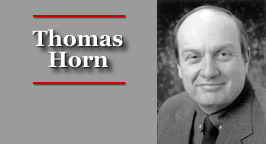
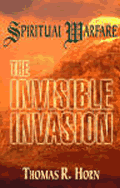
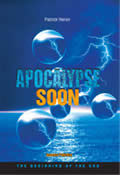



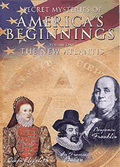




 Share
This Article
Share
This Article